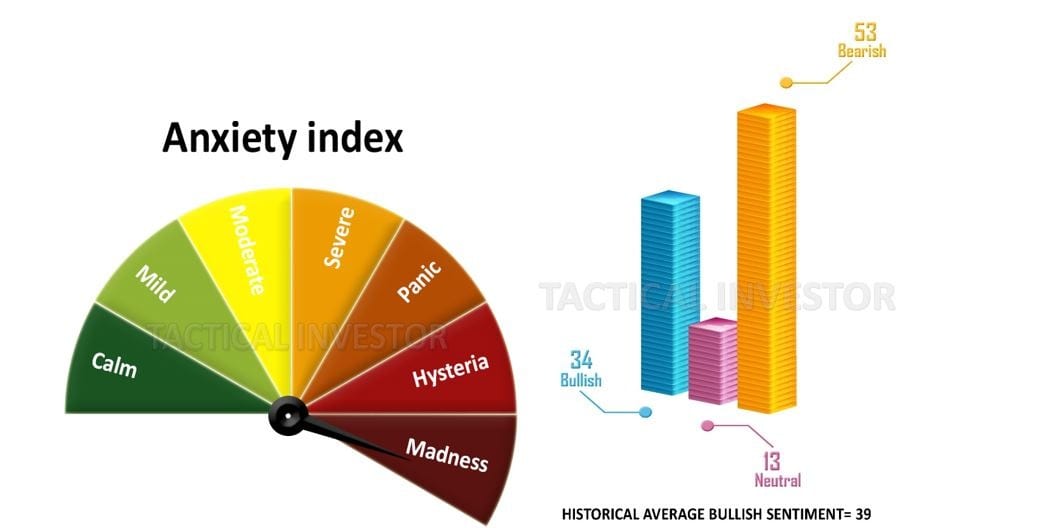
Fear not what you know; fear what you know not. Sol Palha
What Is Mob Psychology? Understanding the Dynamics of Group Behaviour,
updated March 8, 2024
Introduction
Market psychology, also known as crowd psychology, is a branch of social science that examines how significant group dynamics influence individual behaviour. This field draws on the insights of renowned thinkers such as Sigmund Freud, who explored the subconscious influences on group behaviour; Gustave Le Bon, who detailed the characteristics of crowd behaviour; and Wilfred Trotter, who coined the term “herd instinct” to describe how group pressures can lead to collective action.
At its core, mob psychology investigates how emotions like fear and excitement can lead to extreme market fluctuations, making it essential for investors to grasp these psychological undercurrents. Contrarian investors, for instance, aim to capitalize on these extremes by moving against the tide of popular sentiment. However, without a deep understanding of mob psychology, they risk becoming unwitting followers rather than true contrarians.
Historical market events, from the 1929 crash to the 2008 financial crisis, serve as case studies in the power of crowd psychology. These episodes highlight the importance of understanding the collective mindset to navigate market trends effectively. By studying these patterns, investors can better predict market movements and make more informed decisions, avoiding the pitfalls of herd mentality.
In essence, mob psychology offers a lens through which we can view markets’ often irrational behaviour, providing valuable insights for those looking to master the art of investment in an ever-changing financial landscape.
Learning from History: A Guide to Market Sentiment Analysis
Market sentiment analysis is a powerful tool for investors, underpinned by a deep understanding of mass psychology. This approach hinges on recognizing the market’s collective mood and using it to inform investment decisions. Over the past two centuries, several contrarian investors have successfully leveraged market sentiment to achieve significant gains, often by doing the opposite of the general public at critical moments.
Expert Insights and Historical Examples:
1. Baron Rothschild: An iconic figure in financial history, Baron Rothschild famously said, “The time to buy is when there’s blood in the streets.” His strategy was to purchase assets when rampant fear often coincided with market bottoms. For instance, during the panic following the Battle of Waterloo, while others sold in fear, Rothschild amassed a fortune by buying undervalued assets.
2. John Templeton: Sir John Templeton was another legendary investor who capitalized on extreme market sentiment. At the dawn of World War II, he bought shares of every public European company trading below $1 per share. Many investors were selling in fear of the war’s impact on the markets, but Templeton recognized the opportunity in undervaluation. His investments multiplied many times over in the post-war economic boom.
3. Warren Buffett: Warren Buffett, the Oracle of Omaha, is well-known for his contrarian investment philosophy. He advises to “be fearful when others are greedy and greedy when others are fearful.” During the 2008 financial crisis, while the masses were panic-selling, Buffett invested billions in companies like Goldman Sachs and General Electric, securing high returns as the market recovered.
Mass Psychology from Past to Present:
The history of investing shows repeatedly that the masses are often guided by emotion rather than rational analysis, leading to market inefficiencies. Contrarians who understand this can profit from these inefficiencies:
– Panic Buying Opportunities: Historical market crashes, including the Great Depression, the Dot-com Bubble burst, and the 2008 Financial Crisis, demonstrate that mass panic selling often creates opportunities to buy quality companies at discounted prices.
– Euphoria Selling Signals: Conversely, during times of market euphoria, such as the Roaring Twenties before the 1929 crash or the exuberant market before the Dot-com Bubble burst in 2000, savvy investors recognize the warning signs of overvaluation and take profits off the table.
By applying sentiment analysis and understanding crowd psychology, investors can discern when fear or greed drives the market. This knowledge enables them to counteract the herd’s impulse, buying when fear-induced sell-offs occur and selling when euphoria leads to overvaluation. Through careful study of market history and the strategies of contrarian investors, one can navigate the markets more effectively, capitalizing on the emotional extremes of the masses.
The Role of Crowd Psychology in Driving Market Prices
Market psychology plays a critical role in the stock market, where the emotions and actions of a large group of people can drive prices. Crowd psychology, the study of mass mindset and behaviour, can explain why investors sometimes act irrationally and why market prices can experience dramatic swings.
The comic strip and accompanying article provide a visual and clear illustration of the principle of crowd psychology in action in the stock market. By showing the contrast between the emotions of fear and panic on one side and optimism and excitement on the other, they highlight the idea that the feelings of a large group of people can drive market prices. The strip also distinguishes between crowd psychology and fashion contrarianism, pointing out that the latter is based on appearance or trend-following rather than a deep understanding of market forces.
The illustration serves as a reminder that it’s essential to be aware of the influence of emotions on market prices and to approach investing with a long-term, well-informed perspective rather than simply following the crowd or jumping on the latest trend.
The Famous Investment Strategy of “Buy the Panic and Sell the Joy
The adage “buy the panic and sell the joy” encapsulates a contrarian investment philosophy that capitalizes on the emotional extremes of the stock market. It’s predicated on the idea that investor sentiment often swings between fear and greed, which can lead to market overreactions. During widespread panic, assets may become undervalued as investors flee the market, presenting buying opportunities for the astute investor. Conversely, when the market is buoyant and investors are overly optimistic, asset prices may inflate, signalling a time to sell.
The Risks of a Crowd Psychology-based Investment Strategy
While this strategy is grounded in the principles of crowd psychology, it carries inherent risks. The stock market is influenced by a myriad of factors beyond just investor sentiment, including macroeconomic indicators, geopolitical events, interest rate changes, and corporate earnings reports. A strategy based solely on the emotional state of the market can lead to misjudgment and financial loss if these other factors are not considered.
To employ this strategy effectively, an investor must understand market psychology by comprehensively analysing economic conditions and individual company performance. This balanced approach can help investors avoid emotional decision-making and maintain a focus on long-term financial objectives.
Practical Application of Market Psychology
The practical application of this strategy requires discipline and a contrarian mindset. Historical market trends show that the masses often get it wrong at critical junctures:
– During market crashes, fear can lead to a sell-off, but for discerning investors, this can be the optimal time to acquire quality stocks at a discount.
– In times of market euphoria, when investors are piling into the market, it may be prudent to take profits as valuations stretch beyond reasonable levels.
The key is maintaining a level-headed approach, using sentiment as a gauge rather than a directive. By understanding the psychological drivers of market movements and combining this with solid fundamental analysis, investors can navigate the market’s highs and lows more effectively. The strategy of “buy the panic and sell the joy” is not about timing the market perfectly but rather about recognizing and acting on the opportunities that arise when the emotional pendulum of the market swings too far in either direction.
Market Psychology clearly states that one should only abandon ship when the masses are joyful.
Article of interest: Unveiling The October 24 1929 Stock Market Crash
Market Psychology and Crowd Dynamics in the Stock Market
Understanding market psychology and crowd dynamics is crucial for investors. Technical analysis can help identify market turning points, but the study of crowd behaviour—herd mentality and the bandwagon effect—often dictates market outcomes. By incorporating mass psychology into an investment strategy and adopting a contrarian stance, investors can avoid the pitfalls of following the crowd and making decisions based on objective analysis.
Contrarian Insights from Investing Legends:
Charlie Munger, Warren Buffett’s long-time partner, has emphasized the importance of going against the grain. He once remarked on the value of inversion in decision-making, suggesting that investors consider what everyone else is avoiding. Munger’s approach implies that it might be the best time to buy when the market is panicking.
Peter Lynch, the famed manager of the Fidelity Magellan Fund, advocated for investing in what you know and looking for undervalued opportunities. His success was partly due to his ability to ignore the crowd and focus on the company’s fundamental values.
– John Bogle, the father of index fund investing, stressed the importance of keeping costs low and investing long-term. He recognized that emotional investing leads to higher costs and lower returns, advocating for an approach that often goes against short-term market sentiment.
Applying Investment Principles to Life:
Like investing, life requires balancing following trends and forging your path. The principles of contrarian investing—scepticism of popular opinion, focus on long-term goals and reliance on one’s research—can also guide personal growth and decision-making.
A successful investment strategy merges technical analysis with an understanding of mass psychology. Recognizing the market’s mood can lead to identifying trends and making informed decisions. Contrarian investing often involves going against crowd wisdom, which can be enhanced by technical analysis and a deep understanding of market psychology.
The Role of a Trading Journal:
Maintaining a trading journal is crucial for reflecting on successful and unsuccessful trades, helping develop a clear strategy for facing future market challenges.
In conclusion, the stock market is deeply influenced by human psychology. Mastering technical analysis and understanding crowd behaviour can provide a significant edge. By avoiding herd mentality and emotional biases, investors can make informed decisions, leading to tremendous success in their financial endeavours. The wisdom of investing greats like Munger, Lynch, and Bogle shows that a disciplined, contrarian approach can lead to economic prosperity, personal fulfilment, and growth.
Okay, now let’s shift to a historical perspective. Exploring historical perspectives empowers individuals to learn from the past, avoid mistakes and make informed decisions for a secure and prosperous future. Lessons from the Great Depression, the dot-com bubble, or the 2008 financial crisis offer valuable insights applicable to personal finance and life choices. Is there a specific historical event or era you’d like to delve into for tailored insights?
The Masses Are Nervous

The crowd is not in a good mood. They’re panicked and making decisions based on their emotions. This often leads to selling and missing out on opportunities in the long run. When things settle down, the market usually bounces back, but people tend to repeat their mistakes and make the same emotional decisions again.
Once again, they (the crowd)will promise not to repeat their mistakes, but like crack heads they will do exactly the same thing and precisely the worst moment, ensuring they remain in the dog house forever. Sol Palha
Other Articles of Interest

Investor Sentiment in the Stock Market: Riding the Right Wave

When is the Best Time to Visit Colombia? Uncover the Ideal Season

What Is Price to Sales Ratio in Stocks?: A Gem-Spotting Metric

What is Behavioral Psychology?: Secrets of Human Behavior

What’s a Contrarian?: Out-of-the-Box Thinkers and Action Takers

Mass Hysteria Examples in America: Let the Tales Unfold

What is Oleic Acid Good For: Unveiling Its Health Benefits

The Ultimate Guide to Finding the Best Time to Visit Colombia

Stock Market Crash History: Learn from the Past or Be Doomed

How to Invest When the Stock Market Crashes: Embrace the Fear, Buy the Opportunity

Third Wave Feminism is Toxic: Its Impact on America

A Crisis of Beliefs: Investor Psychology and Financial Fragility

Copper ETF 3X: Rock On or Get Rolled Over

Which of the Following Is True of Portfolio Diversification?

What is the Average Student Loan Debt in the US? Understanding the Crisis
Stock market crashes timelines
Dow theory no longer relevant-Better Alternative exists
In 1929, the stock market crashed because of



